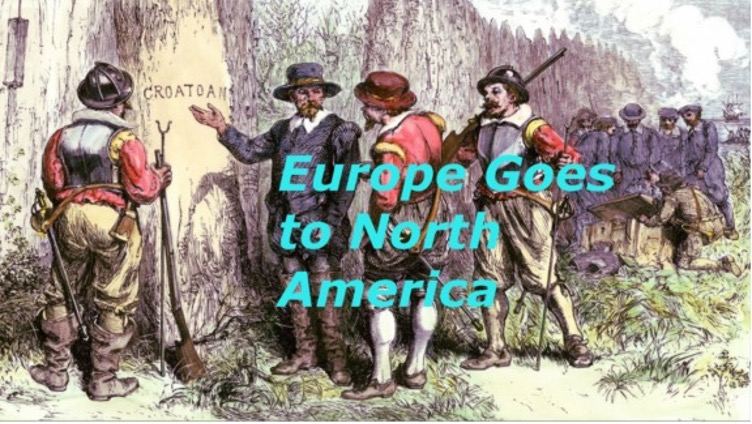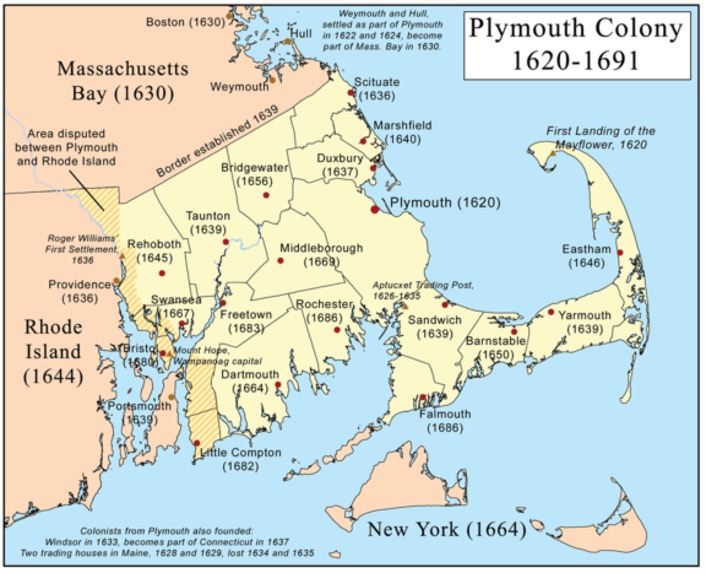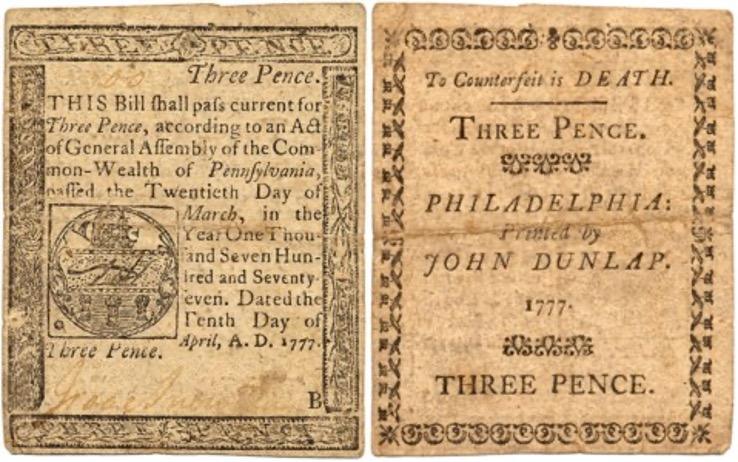From the colonial era to the establishment and independence of the United States of America, the United States has never had an independent monetary system. Until the "Minting Act" of 1792, which marked the birth of the "dollar", the United States truly had an independent monetary system, and the history of American currency It really started.
Before the European colonists set foot on the North American continent, the local natives-Indians were already using "commodity currency", such as shell beads, livestock, wood, flax, tobacco, animal skins, grains, meat, fish, ammunition, etc. Moreover, the use of these commodity currencies has obvious regional characteristics. For example, in Massachusetts on the east coast, because it is close to the sea and easy to obtain shells, the local indigenous people use shell beads as a medium of trade; for example, Virginia and Maryland, which are rich in tobacco, use Tobacco is used as currency.

European colonists
After the opening of the new shipping route, European colonists (Portugal, Spain, Holland, France, Britain) opened up colonies around the world and plundered wealth.
At the beginning of the 17th century, the first group of British colonists (adventurers with gold-seeking dreams) landed in North America and established the colonial stronghold of "Jamestown". This was the first overseas settlement of the United Kingdom in North America, which opened the United Kingdom. Colonial history of North America.
In 1607, the first group of British colonists landed on a swampy peninsula in the Chesapeake Bay in central North America and established the earliest settlement (also the earliest colonial stronghold) here. The British named this stronghold "James "Jamestown", "James" is derived from the name of the King of England, and the river next to it was named "James River". Later, the entire area around this area was named "Virginia" by the British ( Virginia, which means: the land of the virgins), which is now the state of Virginia in the United States.
The fort settlement built by British colonists along the James River, known as "Jamestown".
Later in 1620, the British Puritans took the "Mayflower" ship to Plymouth, Massachusetts, on the eastern coast of North America, and established a second British colonial stronghold in North America. Before landing, the 102 crew members of the "Mayflower" signed the "Mayflower Compact" (The Mayflower Compact), which aims to allow the crew to create an autonomous joint management model after landing. This convention later became the political foundation document for the founding of the United States of America.

Plymouth Colony: 1620-1691
Of course, it is not only Britain that established colonies in North America, but also other European countries, such as the Netherlands, Spain, and France. On this new continent, these countries competed with each other for colonial hegemony and constantly re-divided territories and colonies.
By 1733, in the eastern coastal area of North America, British colonists established 13 colonies, which were later called "original 13 colonies of North America". This 13th colony of British North America later became the cradle of the American Revolutionary War, and it was also the most primitive territory of the United States of America. The English are also the earliest American ethnic group. The language, culture and political system of the United States are deeply influenced by England.
During the first half of the 18th century, the distribution of colonies in the eastern part of North America, the 13 colonies along the eastern coast were controlled by Britain.
In May 1776, the representatives of the 13 North American colonies held the second Continental Congress in Philadelphia, and issued the "Declaration of Independence" on July 4, proclaiming the independence of the 13 British colonies from the Kingdom of Great Britain. The United States of America was born. After that, after more than a hundred years of territorial expansion, the 13 colonies expanded into the current US territory.
The territorial expansion of the United States of America after its founding finally formed the territory of the United States today at the end of the 19th century.
During the first half of the 18th century, the distribution of colonies in the eastern part of North America, the 13 colonies along the eastern coast were controlled by Britain.
In May 1776, the representatives of the 13 North American colonies held the second Continental Congress in Philadelphia, and issued the "Declaration of Independence" on July 4, proclaiming the independence of the 13 British colonies from the Kingdom of Great Britain. The United States of America was born. After that, after more than a hundred years of territorial expansion, the 13 colonies expanded into the current US territory.
The territorial expansion of the United States of America after its founding finally formed the territory of the United States today at the end of the 19th century.

Colonial currency
After the European colonies landed on the North American continent, they would generally follow the customs and use the commodity currency of the local indigenous people (shell beads, tobacco, grain and other commodities as a medium of exchange). In addition, they will also carry some European metal currencies (gold, silver or copper coins) when they travel across the oceans. After arriving in North America, they will use metal coins to buy goods from Europe.
Take the area of ??Massachusetts where the British landed as an example. After the British established colonial strongholds, they began to exchange goods with the local natives. The natives of Massachusetts used shell beads as currency, so the British colonists had to take the initiative to adapt to the use of shell currency. Because the British colonists had advanced tools and lived along the coast, they could easily make shell currency. Therefore, over time, British colonists generally accepted shell beads as a medium of trade.
By 1637, the unified shell currency standard in the Massachusetts region, 6 white beads with holes or 3 black beads with empty shells totaled 1 penny. Later, the British colonists began to produce a large number of shell currencies, and excessive production and counterfeiting appeared, which led to confusion in currency circulation. By 1661, Massachusetts banned the use of shell currency and changed to corn as currency.
In the early immigration and colonization activities of the British to North America (the northeast and east-central coastal areas), commodity currencies were commonly used. For example, Massachusetts used shells and corn as currency, Connecticut used wheat as currency, and Virginia used tobacco as currency.
In the British colonial North America in the 17th century, commodity currencies dominated currency circulation. There are two reasons: one is to follow the customs and adapt to the habits of the local aboriginal people, and the other is the abnormal shortage of metal coins.
There are many reasons for the lack of metal coins:
One is the scarcity of precious metal mineral resources on the eastern coast of North America;
The second is that the sovereign state (the British royal family) does not allow the establishment of a mint in the colony, and also prohibits the export of British mint to the colony;
Third, in the process of the British emigration to eastern North America, most of them were poor or Puritans, and they did not carry a large amount of metal currency. Fourth, the British North American colonies continued to have a trade deficit with the British mainland, even if some metal coins flowed in. Most of the colonies later flowed to the British mainland in the form of a trade deficit, and they could not stay in the colonies at all. Moreover, in the early days, people in the colonies tended to store metal coins instead of using them, so the metal coins in circulation were very scarce.
Commodity currency has its natural shortcomings, such as excessive bulkiness of tobacco, difficulty in uniform quality, and easy damage; shells are prone to overproduction or imitation; grains are not suitable for long-term storage and inconvenient transportation. Therefore, with the development of commerce in the colonies, commodity currency became less and less suitable for circulation, and the demand for metal coins in the British North American colonies became more and more urgent.
After entering the 18th century, the situation began to improve. The inflow of metal coins from the British North American colonies increased, and some commercial cities along the eastern coast began to use metal coins. Metal coins are stable in value, easy to divide, and easy to keep. They are much better than commodity currencies in circulation. Metal coins gradually replaced commodity currencies.
The increase in metal coinage on the eastern coast of North America is mainly related to the strengthening of trade ties with Central America. At that time, many parts of Central and South America (Peru, Mexico, West Indies, etc.) were Spanish colonies. Spanish colonists set up mints in Mexico and Peru (because of the local gold and silver resources) to mint Spanish gold and silver coins. These gold and silver coins Through the West Indies, it flowed into the British North American colonies in the form of trade.
Colonial trade in the North Atlantic in the mid-18th century. At that time, the British North American colonies had trade relations with the British mainland, as well as West Africa, Central America, and Southern Europe. The colonists of British North America sold goods such as dried fish, whale oil, cured beef, and grains to obtain Spanish gold and silver coins from the West Indies.
In addition to obtaining Spanish gold and silver coins from the West Indies, there are two ways to obtain metal coins from the British North American colonies:
First, the metal coins obtained through trade with pirates. After the opening of the new shipping route, merchant ships in the North Atlantic moved back and forth, and pirates were also rampant at sea. Many pirates prefer to choose the coast of North America as their temporary residence. These pirates used looted gold and silver coins on the eastern coast of North America to exchange various items with British colonists who settled there. In the 1820s, the number of pirates fell sharply after being hit, and the gold and silver coins brought by the pirates also fell sharply.
Second, during the Hundred Years' War between Britain and France (1689-1763), North America was an important battlefield. At that time, the British colonies of North America had to fight against France and Spain together with the overlord (the British royal family). During the war, the British royal family would give a large amount of military appropriations to the British North American colonies. These military appropriations were mostly paid in the form of metal coins and bills, which can be directly exchanged for British coins.
The above two methods are long-term effective ways to obtain metal minting, and the British North American colony has a large deficit with the British mainland (metal minting flows to the British mainland). Therefore, from the overall and long-term perspective, the metal money supply in the British North American colonies is still insufficient.
In order to make up for the insufficient number of metal coins, since the end of the 17th century, the colonial self-governing council or government far away from the British Isles tried to issue paper money in North American colonies. Follow the issuance of banknotes).
In 1690, Massachusetts first tried to issue 40,000 pounds of paper notes to pay soldiers (due to the financial constraints of the autonomous government at that time). This was the first batch of paper money issued by the British colonies of North America. Since then, other colonies have followed suit. New York and New Jersey began issuing banknotes in 1709, Pennsylvania and Delaware in 1723, Virginia in 1739, and Maryland and Georgia in 1733 and 1757, respectively.





